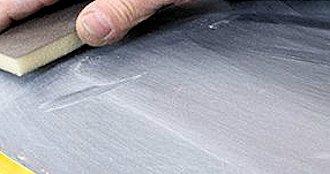Paint Flatting scratches problems

This section includes Paint Flatting scratches problems, lifting, raising or swelling of flatting scratches. This is often a mild form of lifting. To repair allow film to harden thoroughly, then rub out and polish. If scratches are still too noticeable, wet flat with P600 grit paper and respray.
Cause
1. Light scruffing or scratching of old surface, usually with too coarse grit wet and dry.
2. Insufficient flatting of old finish or under-coat.
3. Use of coarse grit wet and dry.
4. Improper cleaning of surface.
5. Flatting across area being repaired and old surface which contains silicone.This really brings the scratches up.
6. lure to allow undercoat to dry thoroughly before flatting.
7. Flatting with petrol.
8. Spraying filler coats too heavily, especially the first coat over old finishes.
9. Use of poor-quality or wrong thinner.
Prevention
1. Use wax and grease remover and plenty of new clean rags to clean an area several times larger than repair area.
2. Use fine grit wet and dry, flatting well back into old finish.
3. Use recommended type and amount of thinner in primer—filler.
4. First coat of primer should be applied wet but thin.
5. Allow enough time between coats of filler for each one to dry.
6. Do not blow air on primer-filler to make it dry faster.
7. Allow surfaces to harden thoroughly before flatting.
8. Never use petrol for flatting old finish or fillers.
9. Flat with P600 grit wet and dry.
10. Allow to dry out thoroughly before applying colour.
11. Thin colour with amount and type of thinner recommended by paint manufacturer.
12. Avoid cheap thinner.
13. Apply as recommended by the manufacturer.



